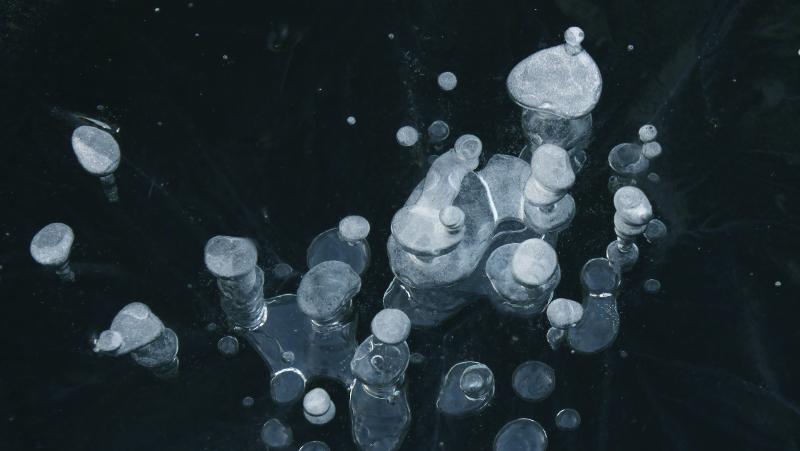A huge methane leak has been discovered at the deepest point in the Baltic Sea, and masses of bubbles of the greenhouse gas are rising far higher into the water column than scientists had expected. This surprising finding challenges previous understanding of methane dispersion in deep water. Let's dive deeper into this remarkable discovery.
The Astonishing Methane Leak
Discover the shocking methane leak at the deepest point of the Baltic Sea.
A vast methane leak has been discovered at the deepest point in the Baltic Sea, challenging previous understanding of methane dispersion in deep water. During an expedition to the Landsort Deep, researchers found an enormous leak 1,300 feet beneath the water's surface. The area leaking methane covers roughly 7.7 square miles, equivalent to about 4,000 soccer fields.
Unlike shallow seabeds where methane bubbles up from decaying organic matter, this leak follows a different mechanism. The methane bubbles are rising far higher into the water column than expected, reaching just 65 feet from the surface. This unexpected behavior raises questions about the factors contributing to the leak and the potential impact on the environment.
Unveiling the Mechanism
Explore the unique mechanism supplying methane to the bottom of the Baltic Sea.
Traditionally, methane in deeper water disperses via diffusion, without the need for bubbles. However, this new leak challenges that understanding. Professor Ketzer, the project leader, suggests that a weaker microbial filter and human activities could be contributing factors.
The Baltic Sea's microbial filter, which typically consumes up to 90% of methane, is thinner than in other oceans. Fertilizers from land reaching the sea enhance algae blooms, leading to more organic matter in sediments. The methane-eating bacteria feed on this material, allowing more methane to escape towards the surface. Additionally, large amounts of sediment deposited by bottom currents may be causing the Landsort Deep leak.
Rising Bubbles and Dissolution
Learn about the surprising behavior of methane bubbles in the Baltic Sea.
The team was astonished to observe methane bubbles rising much higher in the water column than expected. Methane usually dissolves in water as bubbles rise, decreasing in size until they disappear. However, at the Landsort Deep, methane bubbles were observed reaching 1,250 feet into the water column, just 65 feet from the surface.
This phenomenon challenges previous knowledge about methane dissolution. One possible explanation is the high levels of methane in the bottom of the Baltic Sea, requiring bubbles to travel higher in the water column to dissolve. However, further investigation is needed to fully understand this surprising behavior.
Implications for Greenhouse Gas Emissions
Examine the potential impact of methane leaks on greenhouse gas emissions.
Methane leaks like the one discovered in the Baltic Sea are important sources of greenhouse gas emissions. Scientists estimate that there could be several other deep-sea methane fields in the Baltic, emphasizing the need to account for these emissions in climate models.
Understanding the factors contributing to methane leaks and their impact on the environment is crucial for developing effective strategies to mitigate climate change. Ongoing research and exploration of the Baltic Sea will likely reveal additional sites of methane seepage, providing valuable insights into this complex issue.
Conclusion
The discovery of a vast methane leak at the deepest point of the Baltic Sea has surprised scientists and challenged previous understanding of methane dispersion in deep water. The unique mechanism supplying methane to the bottom of the Baltic, the behavior of methane bubbles, and the potential implications for greenhouse gas emissions highlight the importance of further research in this area.
FQA :
What are the potential environmental impacts of the methane leak?
The methane leak in the Baltic Sea could contribute to increased greenhouse gas emissions, further exacerbating climate change. It is crucial to understand the extent of these leaks and their long-term effects on the marine ecosystem.
How does this methane leak differ from leaks in shallower seabeds?
Unlike shallow seabeds where methane bubbles up from decaying organic matter, this leak follows a different mechanism. The bubbles rise far higher into the water column than expected, challenging previous understanding of methane dissolution in deep water.
What are the potential causes of the methane leak?
The thinner microbial filter in the Baltic Sea, human activities such as fertilizer runoff, and large amounts of sediment deposited by bottom currents are potential causes of the methane leak. Further investigation is needed to fully understand the factors contributing to this phenomenon.

